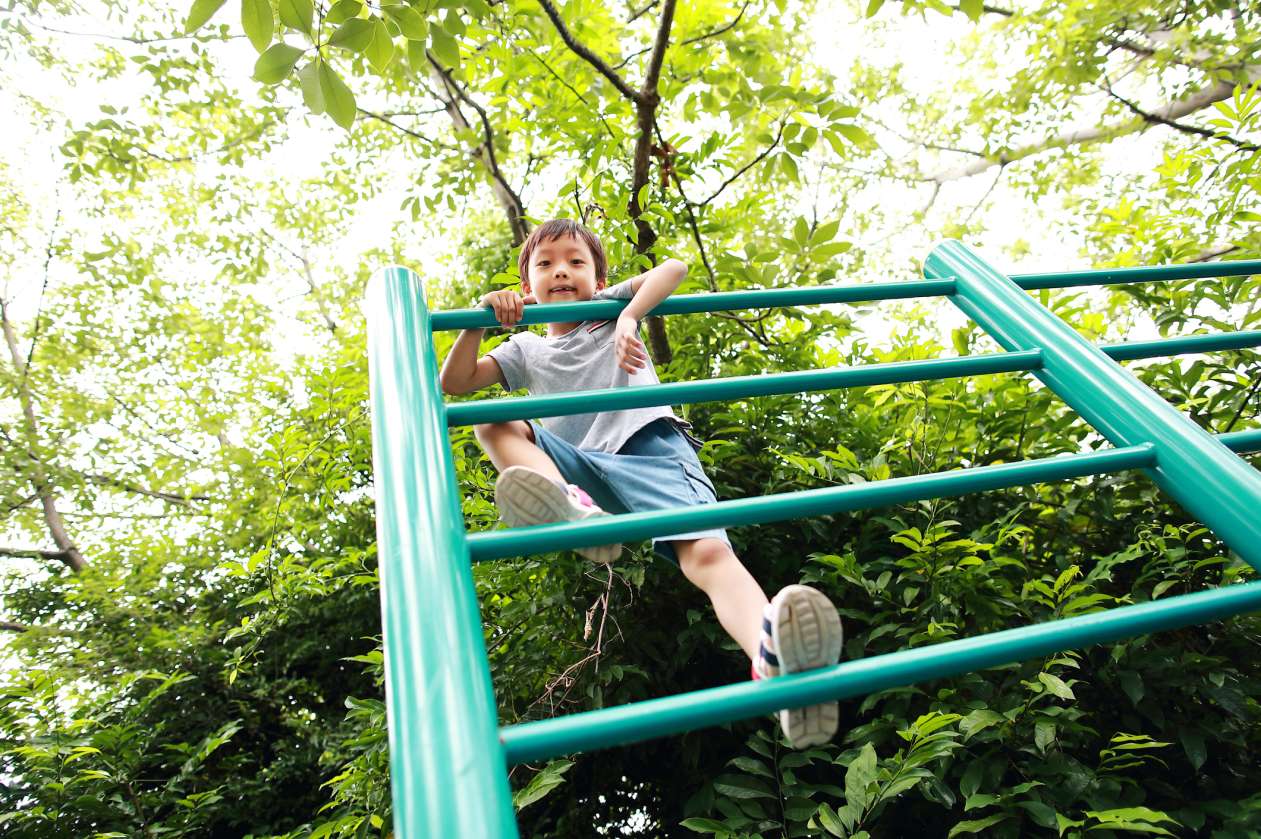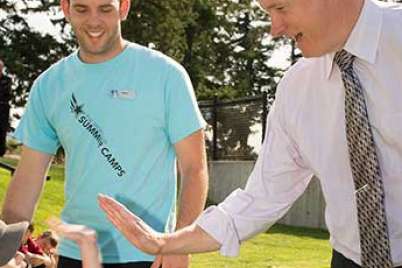
15 signs that your child is physically literate
Editor’s note: This post was first published on March 28, 2016. It was updated on Jan. 29, 2020.
If you were looking for signs that your kids were physically literate, what would you look for?
In the simplest sense, physical literacy means your kids have good movement skills. But it also means they show confidence in their skills when they’re trying something new, and they understand basic words and concepts around movement. They also tend to look for opportunities to be active.
If your kids are physically literate, here are some things you might see:
- You’re at the beach and you ask your daughter to throw you a granola bar. She tosses it perfectly into your hands from three metres away.
- You tell your son to tread water in the pool, and he knows you’re not asking him to walk on water.
- While on a family hike, you encounter a stream. Your children cross it by hopping effortlessly from stone to stone without falling or getting their feet wet. (And they laugh with glee at the challenge.)
- Relaxing in your living room, you turn on some good dance music. Your kids immediately start to gyrate, twist, shuffle their feet, and shake their bodies in rhythm to the music.
- While walking with your daughter in the park, your path is blocked by a large puddle. She doesn’t hesitate. She takes a run at it and leaps over it before you can tell her not to.
- Your kids use doorframes, stair rails, and fences as climbing equipment.
- When you go to the playground, your daughter jumps off monkey bars, climbing walls, and swings and shouts “Look at me!” (And she sticks the landing each time.)
- You ask your son to help you move some boxes. Each time he picks one up, he automatically bends his knees.
- You toss your daughter the television remote, and she catches it without flinching, blinking, or going into spasms of panic.
- Your son’s bike is covered in scratches and dents, and it frequently needs small repairs. Why? Because he uses it to jump off curbs, race friends, and leap over small water features.
- When your kids get new sports equipment or dance shoes, they say “awesome!”
- Whenever she encounters a game of street hockey, scrub baseball, tennis, volleyball, basketball, or pickup soccer, your daughter jumps into the game without hesitating. Even though she doesn’t generally play that sport.
- It’s difficult to walk through your garage without tripping over bicycles, basketballs, hockey sticks, scooters, skateboards, and soccer balls.
- Your seven-year-old resents you for “forcing” him to eat his favourite dinner. Because he wanted to stay outside playing tag and climbing trees with his friends.
- Your children start spontaneously inventing their own games using balls, balloons, and even sticks and stones!
Children develop physical literacy by engaging in plenty of active play in a variety of settings. At a time in history when children are becoming less physically active, it falls on us as parents to find and make opportunities for our kids to engage in active play.
To read tips on how to help your child to develop physical literacy at each age and stage of development, check out our physical literacy checklists. You can also get active with your child through our suggested play activities.
Are you raising a physically literate child? How do they show their movement prowess? Where do they show their confidence? Share your stories by commenting below, or visit our Facebook page.






Having an age range would be helpful, especially for parents. When thinking about large muscle development, I am thinking younger children, but many of these examples are not developmentally appropriate for children under 5.
Hi Susie,
You’re very right. This article was written with elementary-school-age kids in mind, ages 7-12 years. Depending on the action described above, it could be any time between age 7-12. For specific age ranges and motor skills, check out the Physical Literacy Checklists referenced near the bottom of the article. Also, consider signing up for our Active Start newsletter if you haven’t already — it presents activities and articles specifically for parents with infants, toddlers and preschool age children: activeforlife.com/intro…ive-start/
This is a very good article . If I was reading this as a parent and my child was attempting these things but not yet accomplishing them( “sticks the landing every time”) I’m not sure I would feel confident they are physically literate. The learning process is an important missing piece of the article.
Thanks Anita — good point!
I have added links to our physical literacy checklists and activities section of our website to address the learning component that you mention.
Super interesting!..good post!!
This is awesome and so helpful!